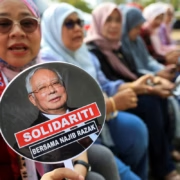Export target at risk over Red Sea tensions
Ongoing tensions in the Red Sea may impact Philippine exports in different ways, albeit odds are stacked against the sector that is already struggling to hit its target for the year.
Robert M. Young, president of the export-oriented Foreign Buyers Association of the Philippines, said the garment and apparel business would likely not be affected, noting the shipping route of exported finished goods or imported raw materials does not take this sea lane.“If ever, it will be minimal (because) of Egyptian cotton or similar material,” Young, whose trade group exports around $1 billion worth of garments and apparels overseas, said in a message sent to the Inquirer.
He said disruptions would have a more pronounced impact on other subsectors, particularly food and agricultural products.
“With the other industries such as food, agricultural products, oil, fuel, coming from the area, (they) definitely will be affected, as the supply chain will be disrupted [as] shipping lines will avoid sailing there and insurance going up, etc,” he said.
Rizal Commercial Banking Corporation chief economist Michael L. Ricaforte also cited repercussions from the attacks in the area, considered one of the world’s most crucial shipping lanes.
‘Proxy war’
“(The) disruption of international commercial shipping activities at the Red Sea area would lead to higher shipping rates or costs, and shipping delays of about 10 days to 2 weeks by taking a longer route around Africa, between Asia and Europe, instead of taking the shorter route through Suez Canal and Red Sea,” Ricaforte said in a message to the Inquirer.
He warned of the possibility of a looming “proxy war,” citing the increased Houthi rebels backed by Iran that prompted the United States and the United Kingdom to start air strikes over Yemen.
The Houthis had vowed to continue the attacks, meanwhile, until Israel puts an end to its offensive against Hamas in the Gaza Strip.
The tensions come at a time when the Philippine export sector is struggling to catch up to the $143.4 billion target under the updated Philippine Export Development Plan.
Bianca Pearl R. Sykimte, the Department of Trade and Industry’s Export Marketing Bureau Director, said earlier this month that the country needed to grow its exports by nearly 40 percent to meet the goal set by the government and the private sector and spur an inflation-hit economy. INQ

















